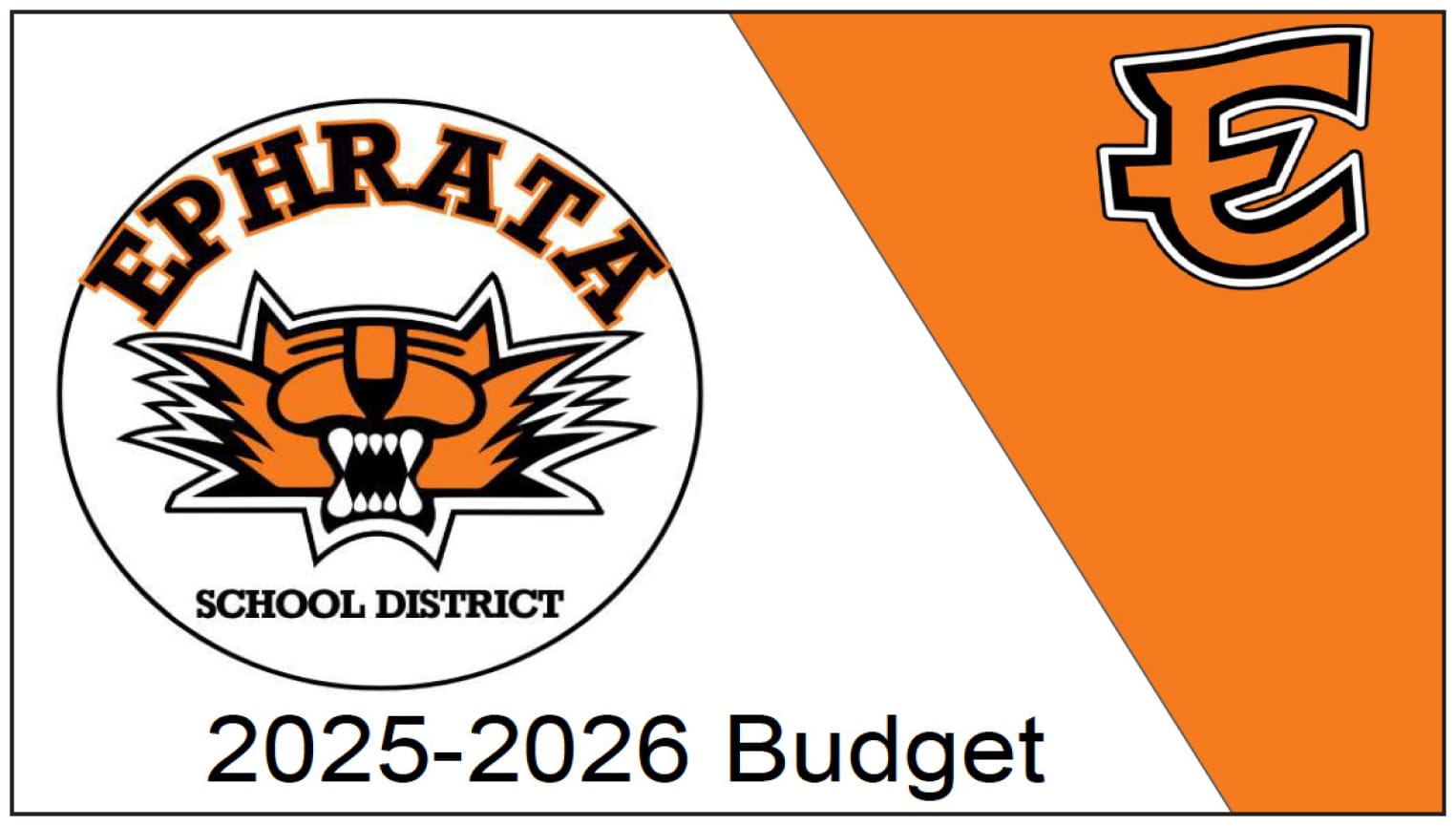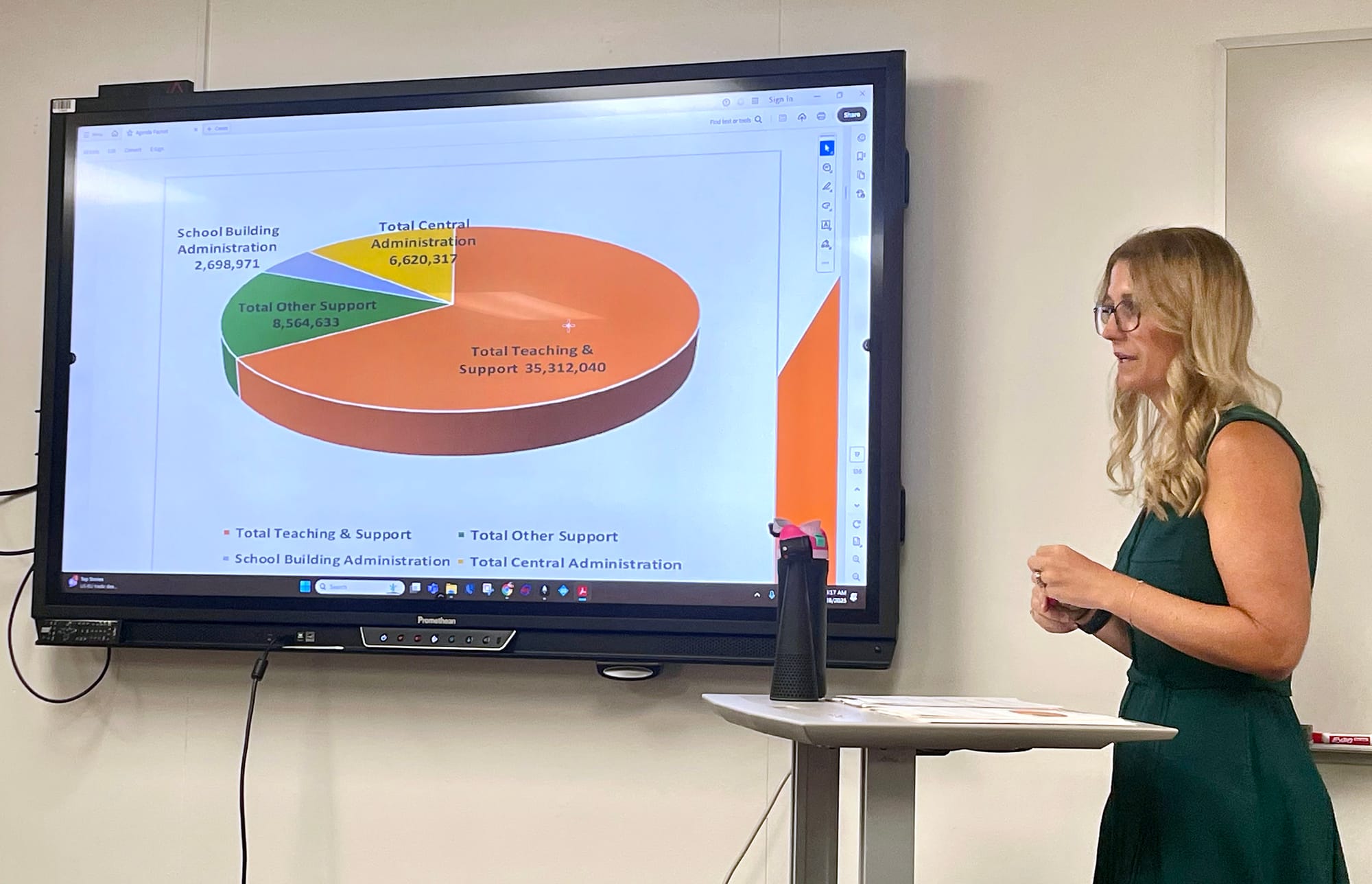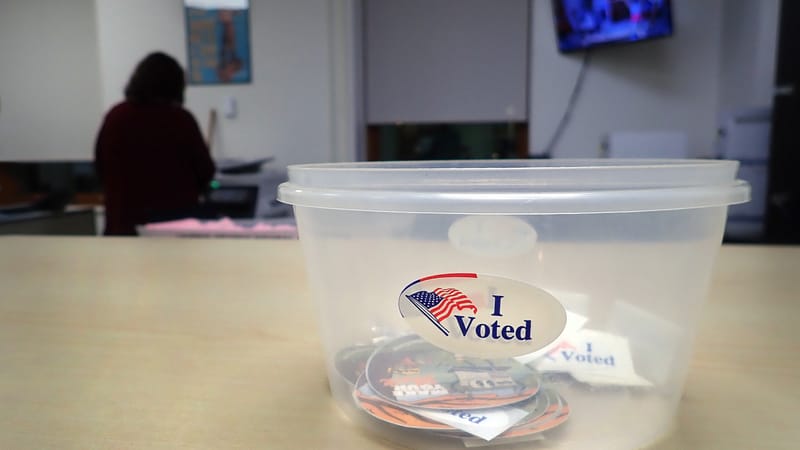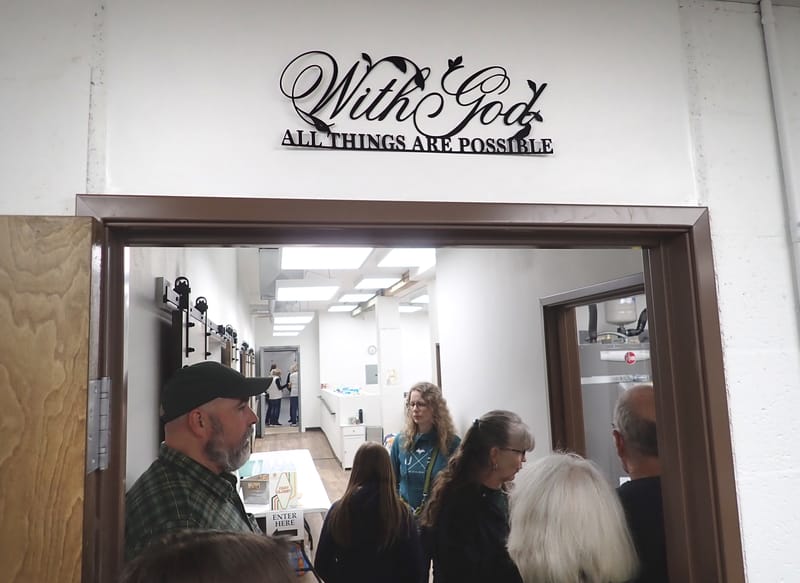New positions, light poles, EHS reroof part of district's budget

EPHRATA – Adding several new employee positions, repairing cracking tennis courts and replacing wooden light poles at high school sports fields, continuing renovation of the district’s transportation/maintenance center, and replacing a leaky high school roof are among the provisions contained in the Ephrata School District’s budget for this 2025-26 year.
As always, there is some uncertainty in any new school budget because it is based largely on estimates of student enrollment – which determines how much money the state will allocate for basic education – before students actually return to the classroom.
“Enrollment by grade is a best guess,” district finance director Allison Razey acknowledged during the July 28 Ephrata School Board meeting.
Superintendent Ken Murray said the district has traditionally done “a good job estimating enrollment,” and both he and Razey said the current projection is a conservative one compared to prior years.
Unanimously approved by board members Jim Adams, Casey Devine, Mike Fleurkens, and Josh Sainsbury, the district’s new budget is based on estimated enrollment of 2,688 fulltime-equivalent students in grades K-12, including students enrolled in Running Start, Open Doors, and Alternative Learning Experience programs.
The 2,688 FTE estimate is lower than ending enrollment totals for both this past school year (2,705 FTE students) and the 2023-24 year (2,702 FTE).
Actual starting enrollment tallies for this year are expected to be presented at the school board’s Sept. 22 meeting, district information officer Sarah Morford said on Tuesday.
Washington's per-student funding can vary significantly between school districts, but averaged about $18,900 in the state's 2023-25 biennium budget. Most of K-12 spending goes toward salaries for teachers, administrators and classified employees.
“Our biggest budget expense is our people,” said Razey.
Ephrata’s general fund expenditures for the coming year are listed at $53.2 million, of which $35.3 million is allocated for staff salaries and benefits. Overall, the district is funding 327.5 fulltime-equivalent positions – about nine more than last year -- with nearly 193 in certificated positions and nearly 135 classified positions. The actual employee numbers are higher because some positions are part-time.
The district is adding a special education teaching position and a middle school counselor, increasing the hours of a music teacher at Parkway Intermediate School, and adding paraeducator help and safety/security staff, said Morford.
The district anticipates receiving about $4.66 million in local revenues including property tax levy funds, state allocations totaling nearly $43 million, and an additional $4 million in federal funding.
There remains some uncertainty over the federal monies, which provide nearly 8% of Ephrata’s revenues. This summer, the Trump Administration talked of cutting education funding to states, but then announced that funds would be released.
“Beyond this school year, there is a lot of uncertainty,” said Morford. “We will be closely monitoring our federal programs and may need to make adjustments for the 2026-2027 school year if funding is reduced or cut in the future.”
Along with paying employee salaries and benefits, the district’s general fund also pays for day-to-day operations including maintenance, food services, supplies and instruction materials, utilities, and insurance.
Separately, the district’s capital projects budget for this year anticipates expenditures totaling $4.12 million. The projects include:
- Replacing the high school roof, which is experiencing recurring leaks. An overlay installed about 10 years ago is now “at the end of its life,” Murray said last month. He expects the district to proceed with a formal bid process in the spring and reconstruction next summer. Funding options may include seeking a state grant and reprioritizing monies initially intended to expand ADA access at Kiwanis Field, Murray said.
- Continued replacement of wooden lighting poles on high school sports fields. The effort initially began three years ago when improved lighting fixtures were being installed on old wooden poles at the Kiwanis Field football/track complex. It was discovered that the poles were rotting at their core and posed a safety hazard. Murray said new steel poles will now be installed at the Tigers softball and soccer fields. Funding comes from a capital levy approved by voters in 2022.
- A portion of those capital levy funds are also being used to complete improvements to the district’s transportation and maintenance center, which houses operations for more than 60 employees. Renovations for the facility, originally built in 1953 for agriculture and welding vocational courses, include improved heating and cooling systems and other energy-efficiency measures.
- Repairing asphalt-based tennis courts at the high school, which show signs of cracking, by next spring.
The district’s other proprietary budget expenditures include:
- Debt service for voter-approved bond redemption and interest payments ($2.26 million).
- Associated Student Body fund ($1.18 million), using revenue generated in part by student fees to pay for extracurricular activities in each school.
- Transportation vehicle fund ($1.33 million), generally financed by state reimbursement to school districts for depreciation of school buses and other student transportation.





